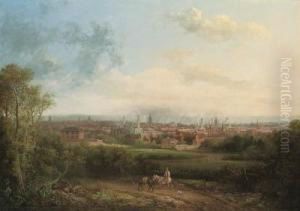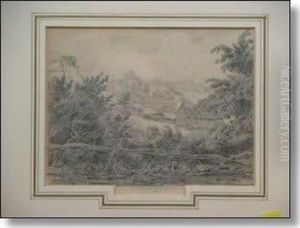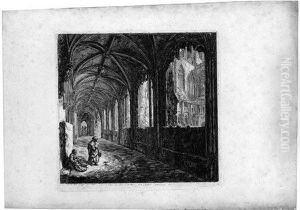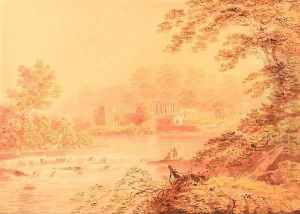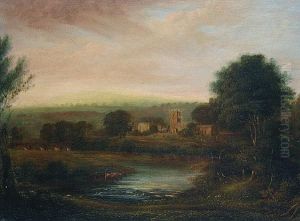George, the Younger Cuitt Paintings
George Cuitt the Younger was an English artist known for his detailed and picturesque architectural and landscape etchings and drawings. Born in 1779, he was the son of George Cuitt the Elder, from whom he initially learned the basics of art, focusing primarily on architectural subjects. His work provides a valuable historical record of English and Welsh ruins and buildings, many of which have since been altered or no longer exist.
Cuitt's talent became evident in his early years, and he quickly outpaced the artistic abilities of his father. He had a particular interest in Gothic architecture, and his travels across England and Wales allowed him to sketch and etch many significant ruins and ecclesiastical buildings, capturing their intricate details and the essence of their surroundings. Unlike many artists of his time, Cuitt often ventured into remote areas to find his subjects, bringing attention to lesser-known architectural wonders.
Throughout his career, George Cuitt the Younger exhibited at the Royal Academy and other prominent venues, although he never became a member of the academy. His works were highly regarded for their precision and the atmospheric quality he managed to impart to stone and landscape alike. Despite the appreciation of his contemporaries, Cuitt did not achieve widespread fame during his lifetime, and it was only in later years that his contributions to British art and history were fully recognized.
Cuitt's dedication to his craft was unwavering, and he continued to produce exquisite drawings and etchings until his death in 1854. Today, his works are considered important documents of British architectural history, offering insight into the past through the eyes of a remarkably skilled artist. His legacy is preserved in numerous collections, both public and private, and his work continues to attract the interest of art historians and collectors alike.


